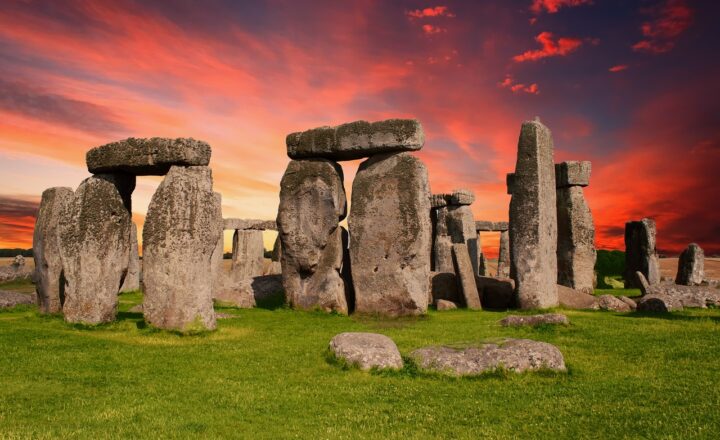How Early Calendars Were Designed Using the Movements of the Sun, Moon, and Stars
November 17, 2024

The invention of calendars marked a significant advancement in human history. From the earliest days of humanity, people have looked to the heavens to structure their lives, coordinating activities around seasonal changes, lunar phases, and celestial events. Early calendars were not just practical tools; they were central to the survival and the cultural life of civilizations.
1. The Importance of Timekeeping in Early Societies
Timekeeping was crucial for various activities, such as agriculture, religious ceremonies, and trade. As societies transitioned from nomadic lifestyles to settled farming communities, precise timekeeping became essential. Coping with seasons dictated when to plant crops, harvest yields, and store food. Ancient peoples understood that tracking time through celestial movements allowed them to optimize these critical activities.
Earlier systems of timekeeping centered around natural cycles – day and night, the phases of the moon, and the annual cycle of the sun. These observations laid the foundation for the development of calendars in various cultures.
2. The Sun and Solar Calendars
The most prominent celestial body that influenced calendar systems is undeniably the sun. Ancient people observed the sun’s annual journey across the sky, which was significantly influenced by Earth’s axial tilt and orbit.
– **Solar Year:** The year is defined as one complete revolution of the Earth around the sun, about 365.25 days. The Egyptians were among the first to create a solar calendar, using a year of 365 days divided into three seasons of four months, with each month consisting of 30 days.
– **The Gregorian Calendar:** Derived from earlier solar calendars, the Gregorian calendar, established by Pope Gregory XIII in 1582, corrected the Julian calendar’s inaccuracies regarding the solar year, introducing the leap year concept to maintain alignment with the seasons.
Solar calendars typically influenced agricultural cycles significantly, dictating important events such as planting and harvesting.
3. The Moon and Lunar Calendars
Alongside the sun, the moon’s phases provided another method of timekeeping. Lunar calendars track the moon’s cycle, which lasts approximately 29.53 days.
– **Lunar Months:** Many ancient civilizations, like the Babylonians and the Chinese, developed lunar calendars based on the sighting of the moon’s phases. A lunar year consists of 12 months (about 354 days), hence falling short of a solar year. This discrepancy meant that lunar calendars would drift out of sync with the seasons over time.
– **Lunisolar Calendars:** To resolve this issue, lunisolar calendars were created, intercalating months to realign with the solar year. The Hebrew calendar is an example, incorporating leap months to synchronize with seasonal agricultural activities.
The reliance on the moon also influenced religious practices, resulting in the celebration of festivals at specific lunar phases, such as full moons or new moons.
4. The Stars and Astronomical Observations
Stars have long guided early navigators, influencing calendars as well. Certain cultures, like the ancient Egyptians, tracked specific star positions, such as the heliacal rising of Sirius, which heralded the annual flooding of the Nile – a crucial event for agricultural planning.
– **Constellation-based Calendars:** Cultures like the Greeks and the Maya built elaborate systems based on the visibility and positions of constellations. They often marked seasons by observing the stars, aligning their calendars with celestial events, including equinoxes and solstices.
– **The Zodiac:** In the Zodiac system, the twelve constellations align with specific periods in the solar year, giving rise to a calendar based on both solar and lunar cycles used in various cultures for timekeeping and astrology.
The combination of astronomical observations provided a comprehensive understanding of the passage of time, intertwining the natural world with cultural beliefs and practices.
5. Cultural Practices and Calendars
Different civilizations had various rituals and traditions embedded in their calendars, showcasing how they intertwined timekeeping with spirituality and community life.
– **Agricultural Festivals:** Most societies celebrated planting and harvest festivals, which were timed according to their calendars, influencing communal activities.
– **Religious Observances:** Calendars often dictated holidays and religious observances, resulting in cycles where sacred times would coincide dramatically with agricultural cycles.
– **Civic Life:** Political events, such as the coronation of leaders, treaties, and wars, were often planned in accordance with calendar dates considered to be auspicious or significant.
Calendars were integral to a society’s identity, thus linking agricultural efficiency with the community’s religious and cultural life.
Conclusion
Early calendars showcase humanity’s endeavor to understand and interact with the universe. Through observations of the sun, moon, and stars, ancient peoples developed intricate systems to track time, ensuring survival, social organization, and cultural expression. Today, we benefit from this legacy, relying on complex calendar systems built on centuries of astronomical observations and societal needs. As we look toward the future, we continue to respect and leverage the celestial rhythms that governed ancient life, a testament to our ongoing connection to the cosmos.
Understanding the origins of calendars enhances our appreciation of their role in shaping human history and civilization. From subdivisions of time to celebrations that unite communities, our calendars remain a dynamic reflection of the human experience.







